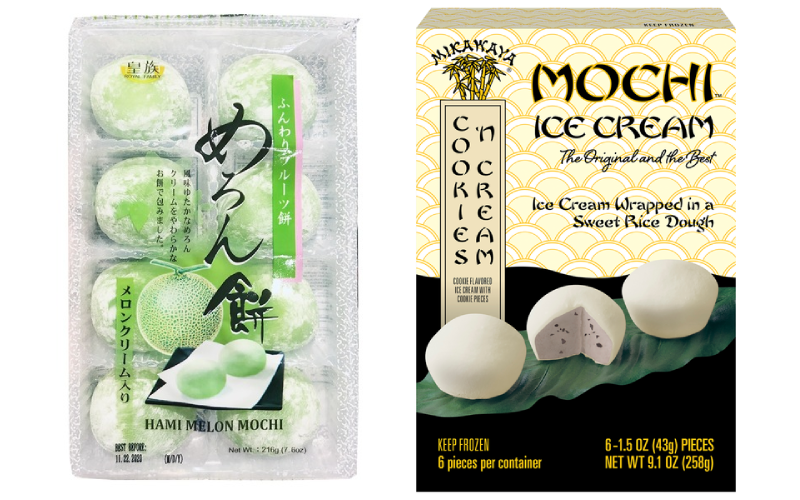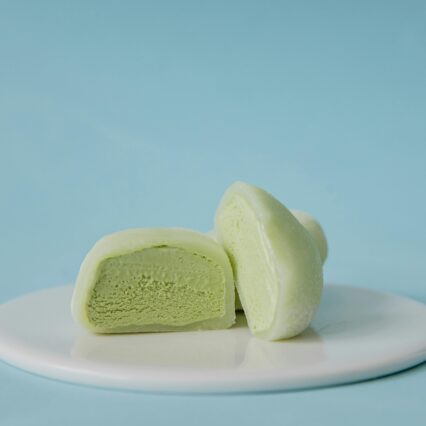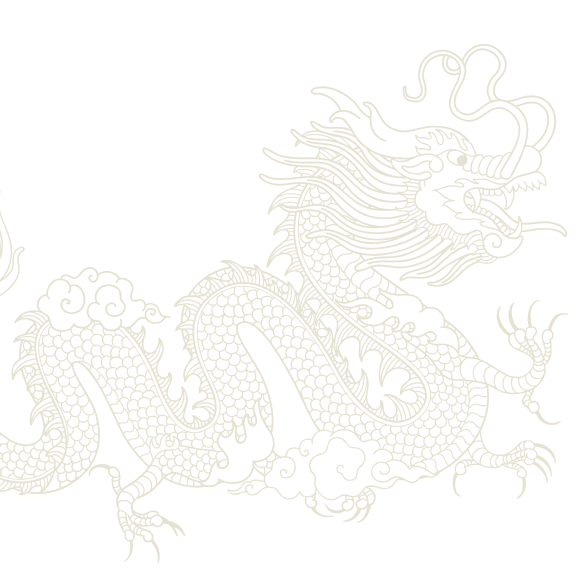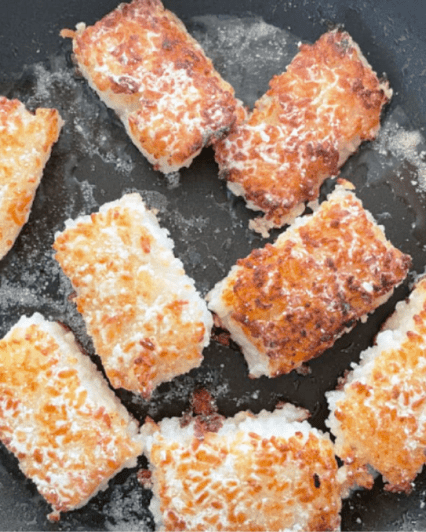Mochigome, also known as glutinous rice or sticky rice, is a type of short-grain rice used for making mochi. To transform into mochi, the rice is soaked overnight, steamed and then pounded until the desired consistency. It is essential to complete this step while the rice is freshly steamed and still hot.
The traditional method of making mochi, known as mochitsuki, involves a perfectly-coordinated back-and-forth with multiple people pounding and slapping the rice with hands and, most noticeably, a giant mallet. You often see this performed during Oshogatsu, or Japanese New Year.
For those seeking a more convenient method, modern appliances like mochi makers which steam and pound the rice or simply a microwave make it easy to enjoy mochi at home. For the microwave, mix mochiko – a type of glutinous rice flour made from mochigome – with water, microwave, mix again, and microwave briefly once more until the desired consistency is reached. This method is simpler and results in a generally softer mochi. For a more in-depth comparison of these, the YouTube channel Japanese Everyday Food has a great look at how the techniques and final mochi differ.
For most foods, after creating mochi itself, you’ll want to coat it with starch — potato or corn starch is common — before cutting it into individual pieces.
Plain mochi, known as kirimochi, is not intended to be sweet, but enjoyed for their stretchy texture. It is often added to soups or grilled with some soy sauce. By itself, mochi is somewhat bland, but makes it a great vehicle for more flavorful ingredients, like sweet red bean paste or ice creams. So, onto that:
Mochi in action (AKA some different ways to enjoy it)
The great thing about an ingredient like mochi is that it’s pretty versatile. And not only can it be combined with many other flavor drivers, but there are many ways to cook it — or not — that bring out different qualities.
Probably the most iconic mochi-based confection is daifuku, which is mochi filled with sweet fillings like red bean paste (anko) made from Adzuki beans. Adzuki is a super common ingredient in Japanese sweets, so it makes sense that the simplest mochi sweet is married with the most ubiquitous ingredient.
Yet at the same time, mochi ice cream might be more well-known to many in North America. This was invented by California-born Nisei, Frances Hashimoto, whose parents immigrated from Japan and founded the wagashi company, Mikawaya, over 100 years ago. Even today, if you think of any mochi ice cream packaging, you’re probably picturing the Mikawaya box.

Mochi ice cream comes in a variety of different flavors, but some of the most popular are strawberry, green tea, mango, or chocolate. (And of course, there’s also adzuki red bean-flavored mochi ice cream, too!)
Dango is another iconic Japanese sweet. These round dumplings are made from mochiko or a blend of rice flours, boiled, and then skewered on bamboo sticks. Often, they are coated with red bean paste or sprinkled with toppings like kinako (roasted soybean flour). The most well-known variety is mitarashi dango, where the dumplings are grilled and glazed with a sweet soy sauce.
Butter mochi is a Hawaiian specialty. Made with mochiko rice flour, butter mochi is a fusion of flavors and textures resembling a mochi-based cake or blondie.
It is extremely easy to make: Simply combine mochiko, baking powder, sugar, and salt with the wet ingredients — coconut milk, eggs, evaporated milk, and melted butter. Mix everything together, then bake for an hour at 350 degrees Fahrenheit. Mochi Mommy takes a look at some more details, including ingredient amounts and different variants and flavors of butter mochi.
If you want to up the ante, there are mochi doughnuts, too. These are simply doughnuts made from mochiko flour; this makes them extra light and springy. While you can make them in any shape the classic is the “pon de ring.” This style features eight doughnut hole-sized pieces of batter, piped into a doughnut-shaped ring and fried. After frying, the extra chewy doughnuts are traditionally dipped in a light glaze.
Hishi mochi is another one. It’s particularly associated with Hinamatsuri, or Girl’s Day, and is almost like the Neapolitan ice cream of mochi; this rhombus-shaped wagashi is made of three layers of mochi colored pink-red, white, and green. It’s pure mochi, so if you love mochi by itself you’ll love it, but if you’re more iffy on texture and like mochi more as a complement to other ingredients, it might be more mochi than you can handle.





